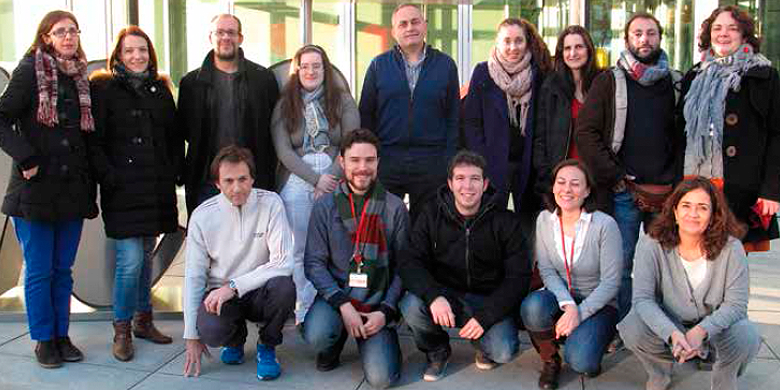The mechanism that controls localization of the protein rac1 in the cell nucleus, crucial for understanding the control of cell shape and tumor invasion
The sustained presence in the nucleus of the protein Rac1 produces changes in nuclear morphology that are important in several biological processes, including malignant cancer.
This is the finding of the research group directed by Dr. Miguel Angel del Pozo at the Centro Nacional de Investigaciones Cardiovasculares (CNIC), who, in the latest edition of Developmental Cell, describe the important impact that nuclear localization of this protein has on the capacity of cells to migrate and invade tissues.
The existence of nuclear Rac1 has been known for a few years, but mystery has surrounded how this localization is regulated and what function it plays. The new study identifies the molecular mechanism that regulates transport of Rac1 between the nucleus and the cytoplasm. Once in the nucleus, Rac1 promotes structural changes that facilitate its deformation to enable the cell to migrate through confined spaces.
In the study, published in Developmental Cell, the CNIC researchers describe the importance of the correct subcellular localization of Rac1, “which is what ultimately controls its state of activation. The sustained presence of Rac1 in the nucleus translates into alterations to the organization of the nuclear membrane through changes in nuclear actin, and this causes changes in nuclear shape,” explains Dr. Del Pozo.
The authors have identified specific genetic sequences required for exit of Rac1 from the nucleus, both in Rac1 itself and in other proteins involved in this process. These sequences provide potential targets for the development of future therapies. “Our results confirm the need for dynamic regulation of Rac1 in the nucleus, and at the same time serve as the basis for the identification of future molecular targets associated with the reduction of the levels of this protein in the nucleus, ”explains first author Dr. Inmaculada Navarro.
The authors explain that the first step toward tumor invasion require the activation of signaling mechanisms implicated in the control of the actin cytoskeleton. According to Dr. Del Pozo, “These processes permit changes in cell shape that favor migration to neighboring tissues. In the case of tumor cells, this migration produces metastasis.”
In this process, tumor cells need to modify both the position and shape of their nuclei in order to be able to pass through the narrow pores present in the surrounding matrix. “Learning about the molecular mechanisms that control nuclear shape is therefore crucial for understanding tumor invasion,” underlines Dra. Navarro.
Rac1-mediated nuclear deformation would thus favor the ability of cells to adapt their shape, thus enabling them to pass through these small pores, an essential mechanism not only in diseases like cancer but also in physiological processes like embryonic development and wound healing, says Dr. Del Pozo.
To confirm that their findings obtained at the cell and molecular level are relevant to pathological processes, the authors studied Rac1 localization in healthy tissue and samples from highly metastatic human tumors. “Nuclear Rac1 accumulation is very high in samples from highly aggressive prostate tumors, and its level correlates with the grade of malignancy,” remarks Dr. Navarro. The study published in Developmental Cell thus points to the possible use of the level of nuclear Rac1 as a marker of tumor progression.











